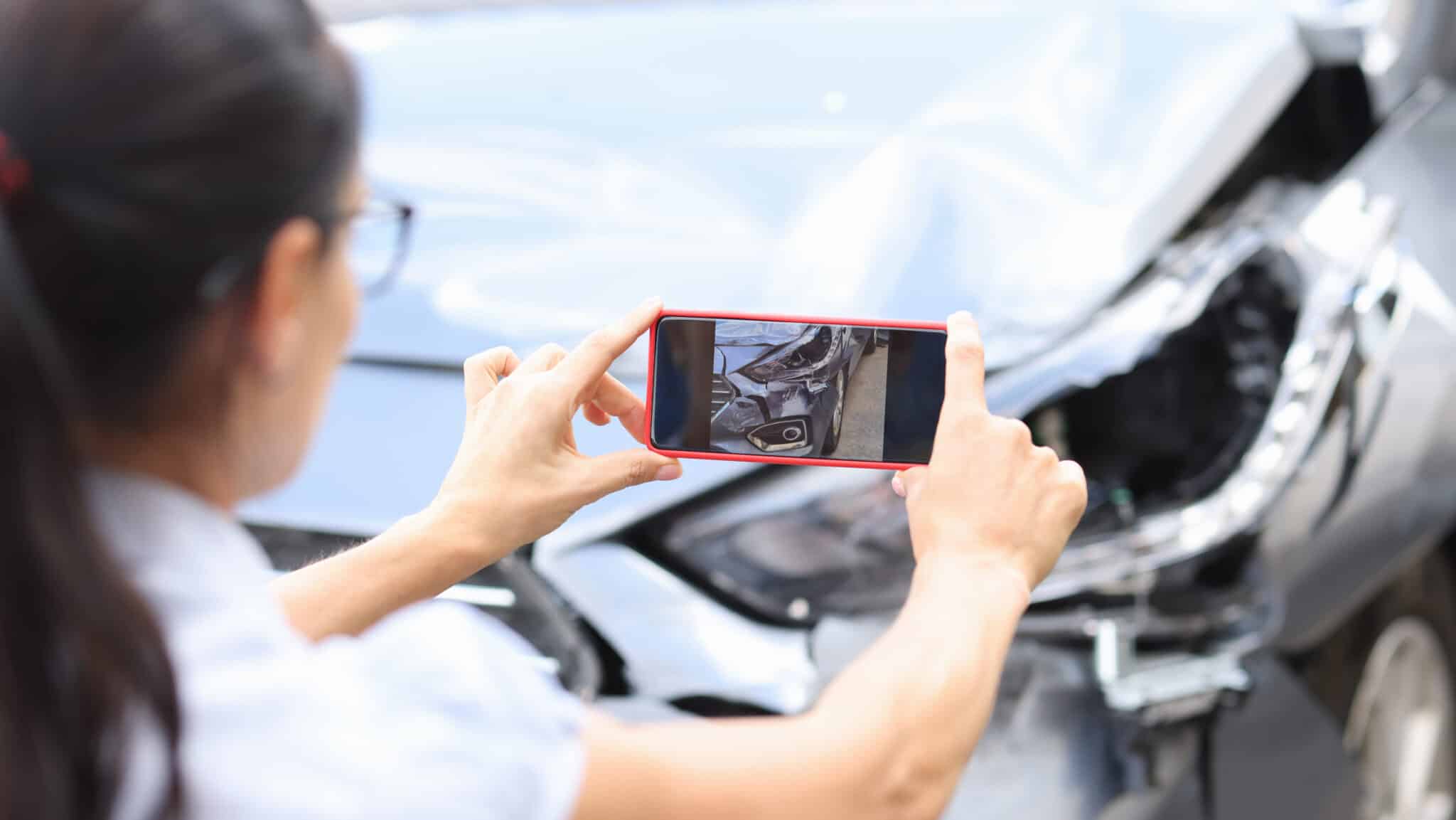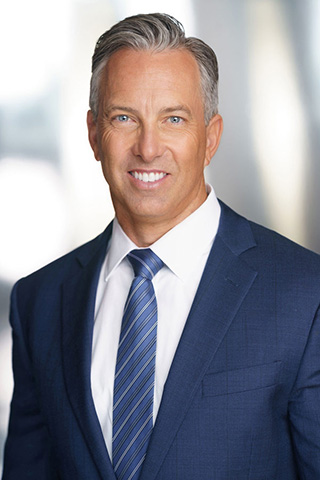
What Happens After a Car Accident? Take These Steps
There are 12 steps you need to take immediately after a car crash if you are able. They range from calling 9-1-1 to alerting the police and notifying your insurer. Missing one of them can weaken your insurance claim or lawsuit and make it difficult to recover damages.
Since a collision happens unexpectedly, preparation is a necessity. To satisfy California Law and to be ready to file a lawsuit later on, doing this will put you ahead after a car accident. Keep this checklist on your phone, or print it out and put it in the glove compartment so you can easily refer to it. What you do immediately after the accident will determine what happens later.
Table of Contents
- Los Angeles Car Accident Statistics
- Step #1 – If Injuries Exist, Call Emergency Services
- Step #2 – Stay at the Scene of a Car Accident
- Step #3 – Get Your Vehicle Out of Harm’s Way
- Step #4 – Obtain and Provide Contact Information
- Step #5 – Write It All Down
- Step # 6 – Take Pictures & Videos of Everything
- Step # 7 – Watch What You Say
- Step #8 – Commenting on Your Physical Condition
- Step #9 – Describe Your Injuries
- Step #10 – Call the Insurance Company
- Step #11 – Report the Accident to the DMV
- Step # 12 – When To Call a Lawyer After Car Accident
- After Car Accident FAQs
Los Angeles Car Accident Statistics
The risk of a car crash in Los Angeles is staggering due to the many residents and visitors driving on urban streets, residential roads, and clogged highways. Of these, one fatality occurs every 30 hours [1], and Los Angeles has a high number of fatal crashes compared to other areas.
Worst Intersections for a Car Accident
Four intersections carry the most significant risk of a car accident, according to the Los Angeles Police Department [2]. They are:
- Highland Avenue and Hollywood Boulevard in Hollywood
- Florence Avenue and Vermont Avenue in South L.A.
- San Pedro Street and Washington Boulevard in South L.A.
- Oxnard Street and Van Nuys Boulevard in Van Nuys
Mapping Car Wreck Statistics in Los Angeles
There were 40,669 crashes in Los Angeles County in 2021 [3]. Of these, 4,477 involved severe injuries or fatalities [4]. The Transportation Injury Mapping System in California breaks down the crashes in 2021 according to severity, as illustrated below: [5]
| Fatal | Serious Injury | Visible Injury | Pain Reported |
| 630 | 3,847 | 13,122 | 23,070 |
The reported incidents note the findings at the accident scene. Sometimes, the degree of initial pain is misleading since delays with the onset of symptoms might occur. Cervical strain (commonly referred to as whiplash) may take up to 72 hours for symptoms to appear. This injury can heal within six months to two years, depending on the intensity of impact.
In other cases, releasing adrenaline (the “flight or fight” hormone) can mask the initial response to the accident. Once the level of adrenaline decreases, the pain and other symptoms related to the injury will be apparent.
Learn More: Common Causes of Car Accidents in Los Angeles
What To Do After a Car Accident – 12 Essential Steps
#1 – If Injuries Exist, Call Emergency Services
The first and most critical step to take after a car accident: if you can assess whether or not injuries exist, then call 9-1-1 to get the emergency medical help you and others may need. Even if you sense injuries may be minor, use great caution, avoid stepping into oncoming traffic and pay close attention to your physical health. Sometimes you may not feel the effects of a crash right away. Take the safe route and call for help when injuries exist.
#2 – Stay at the Scene of a Car Accident
Leaving the scene of an injury accident can lead to a felony charge unless you need immediate medical assistance and can prove it, especially if another person is injured or killed. Alternatively, if only property damage occurs, you must provide contact information to the vehicle owner before leaving the scene. If you don’t, the police may charge you with a misdemeanor.
Recovering compensation when the at-fault driver leaves the scene is somewhat complex. Your attorney will help you obtain compensation. If the police or a personal injury law firm investigator can track the fleeing driver down, you can file a lawsuit. However, you can still rely on your uninsured/underinsured insurance coverage if the hit-and-run driver is not apprehended. This is an add-on auto insurance policy in California used to recover injury damages.
#3 – Get Your Vehicle Out of Harm’s Way
This step has a lot of variables. If there were no severe injuries, you could move your car to the side of the road. This way, you prevent additional accidents since your vehicle is likely to block traffic. However, if someone is seriously injured or has died in the crash, it is best to leave your vehicle where it is. In the latter situation, tie a white cloth to the antenna or door handle, and put up roadway flares if you have them.
#4 – Obtain and Provide Contact Information
Providing and having contact information is a critical step and is best done at the crash scene. Bring your registration and insurance card, and ask the other driver to provide theirs. Take a photo of the documents, and let the other person do the same. If witnesses are present, ask for their names, addresses, and telephone numbers.
If a witness has something to say about the crash, record it on your cell phone or write it down. Your car accident attorney will want to get in touch with them. In addition, you will want to get the name and badge number of the police officer who arrives at the crash site.
When talking to the other drivers, it is important not to say anything that could be used against you later. A notable example is a driver who says they are sorry the accident happened. This statement is generic, and most are sorry when a crash occurs. Nonetheless, it is possible to interpret this simple phrase as an admission of guilt, and the insurer can use it against you during negotiations or in court.
#5 Write It All Down
It is vital to write down everything about the accident. Here are some critical notes:
- The location of the vehicle: Write down or take photos of street signs or highway markers where the accident occurred. Note any landmarks or stores in the area.
- The vehicles: Write down the year, model and make of all vehicles involved in the accident. Also, note or photograph the license plate of every vehicle in the crash. The VIN of the other car or truck involved in the collision is also helpful. The VIN is needed to report the accident to the DMV [6], which is required by law. You can find it on the vehicle registration or insurance card. It is also listed on the inner part of the driver’s car door. The inner door location may be tricky to obtain, and it is best to avoid this if the driver seems agitated. You can also find it on motorcycles on the steering head.
#6 – Take Pictures & Videos of Everything
They say a picture is worth a thousand words, and nowhere is it more accurate than at an accident scene since you are there before anyone else can evaluate or remove evidence. When you take a picture or video of the vehicles and your bodily injury (if you can), you are immortalizing proof of the damage and trauma. In addition, by taking photos of vehicles that are not damaged, you are preventing someone from falsely claiming you caused harm.
A car accident law firm will often send investigators to the accident scene as soon as possible, but your photographs serve as an initial description of the crash. If you cannot take photos or videos, see if you can return to the accident site later that day. If not, perhaps you can ask a friend to capture the images.
It is essential for everyone trying to document the accident to be careful of not injuring themselves and do it with the utmost caution. If you cannot do it safely, contact an attorney.
# 7 – Watch What You Say
Avoiding blanket statements when talking to your insurer or others at the accident site is important. While honesty is always the best policy, it is impossible to know for sure what happened immediately after the accident. When looking at the incident in its totality, it is best to wait for your attorney’s investigator to examine it.
Do not say anything that could be misinterpreted as guilt. For instance, if your vehicle goes out of control, it might be due to a manufacturer’s mistake, not yours. Additionally, maintenance personnel may not do their job, and potholes or other negligence by the city or state may prove instrumental in causing the accident. In addition, the design of the road and its construction may be a factor in the crash. That is why expressing opinions before an investigation can be a big mistake.
#8 – Commenting on Your Physical Condition
It is permissible not to provide information about your injuries. This is an honest assessment of your condition. Many injuries do not manifest symptoms initially, so it would be inaccurate to speculate. Instead, it is better to say that you will seek medical care as soon as possible.
#9 – Describe Your Injuries
Aside from taking pictures of some injuries, if you seek medical care, petition a nurse to take photos. Then, it is time to describe the pain or other symptoms you are feeling. After all, your injuries are a big part of the compensation you may receive, so the more detail you can provide, the better.
Many injuries can occur after a crash. These can range from minor to severe, disabling or life-threatening. You can also suffer from emotional distress that can lead to post-traumatic stress disorder [7].
Some common physical injuries are:
- Concussions
- Bone fractures
- Traumatic Brain Injuries (TBI)
- Spinal cord injuries
- Back pain
- Scarring and disfigurement
- Burns
- Soft-tissue injuries
#10 – Call the Insurance Company
Let your car insurance company know you were in an accident as soon as possible. Don’t worry about your rates increasing since your insurer is prohibited from raising your premium if you did not cause the collision [8]. If you don’t report the accident to the insurer, you are not keeping your agreement with the insurance company [9]. So, make that call as soon as possible. The insurer must begin an investigation of the accident within 15 days of notification and accept or deny your claim within 40 days.
Do not refrain from reporting the accident if it was your fault.
#11 – Report the Accident to the DMV
You are required by law to report the accident within ten days of the day it happened if someone died in the crash, if someone suffered a minor or major injury, or if more than $1,000 worth of damages occurred [10].
Sometimes, a driver may not be sure they should file this with the DMV. Do it anyway. You can have your license suspended if you don’t. You will need to file California DMV Form SR1 to do this. [11]. You are required to have a minimum of $15,000 coverage for a single person, $30,000 for everyone hurt in the collision and $5,000 for property damage. You can get more insurance, and many people do, but quite a few cannot afford to do this.
You can also get uninsured/underinsured insurance to protect you from another driver with too little or no car insurance. Comprehensive and collision are other ways to pay for property damage.
#12 – Know When to Call a Lawyer After a Car Accident
Don’t be caught trying to navigate the waters of a lawsuit or an insurance claim on your own. Although you have two years to file a personal injury lawsuit in California [12], it is best to retain an attorney as soon as possible since bills continue to mount and evidence can disappear. There is no reason for you to suffer financially and physically for another’s negligence.
After a car accident, you may be unable to work and hospitalized or recovering at home. You may face astronomical financial loss. The insurance company may offer a sum that is insufficient to cover your lost wages and medical expenses along with other financial drains. It is often tempting to take their inadequate offer, but it comes at a cost to you.
If you require medical care after you accept their offer, you can’t file a claim against the at-fault party or their insurance company. Once you take the money, you are on your own.
A car accident lawyer will work to protect your rights and obtain the compensation you deserve by answering your questions, examining your case, and discussing your strongest options moving forward.
Frequently Asked Questions After a Car Accident
Are there things I need to do after a car accident?
Yes. Our checklist identifies 12 essential steps to take after a car crash. If you are injured, it might be hard to do this alone. That is where a lawyer can help.
Will my insurance rates go up if I report an accident?
No, they will not if someone else’s negligence caused the accident. California is one of two states that stop insurance companies from doing this.
Do I need to contact the DMV?
Yes, California’s law demands it. If you don’t, you can face penalties. You can fill out the reporting form online.











